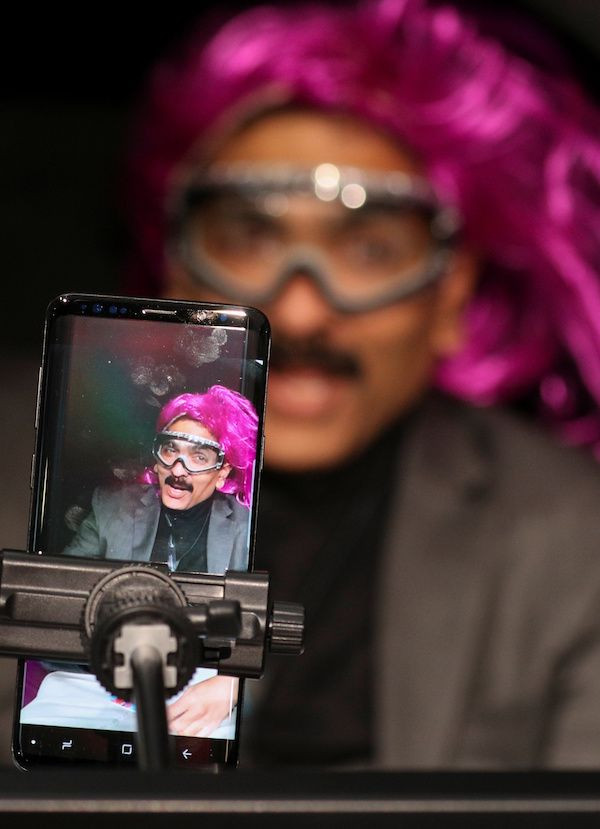Galaxy S9+ Vs. iPhone X Camera: Comparing DxOMark Ratings Of Samsung, Apple Flagships

It’s been a week since Samsung unveiled its Galaxy S9 and S9+ flagship handsets. And since DxOMark has already published its verdict on the S9+ camera technology, it’s high time for consumers to know if the bigger Android smartphone offers better image quality than Apple’s iPhone X. Below is a comparison of how each phone scored in DxOMark’s different tests.
DxOMark, the trusted industry standard for camera performance, announced the Galaxy S9’s bigger brother as the high-end smartphone to beat at the present time. While the South Korean tech giant is proud of the variable-aperture lens on the primary camera, the 2X optical zoom on the front-facing snapper and the super-slow-motion video mode as the standout features of the reimagined camera technology on the S9+, it’s actually the performance and image quality that earned the device the highest score ever in DxOMark’s mobile camera ranking.
On the other hand, Apple’s iPhone X also made a mark at the time of its release. The 10th anniversary iPhone primarily impressed in terms of the quality of photos it takes. Its highlighted strengths include good exposures, accurate color rendering, good detail with low noise and a natural-looking bokeh effect, among others. However, its video-capturing technology wasn’t lauded as much and only ranked second place, behind the Google Pixel 2.
DxOMark gave the Galaxy S9+ an overall score of 99 points, placing it on top of the standard’s mobile ranking and beating the Google Pixel 2 by just one point. The handset’s Photo score is at 104, while its Video score is at 91. The latter may be a little lower but it’s actually still among the best as of late. “The S9+ comes with a camera that hasn’t got any obvious weaknesses and performs very well across all photo and video test categories,” DxOMark noted in its report.
In comparison. the late-2017 iPhone model got an overall score of 97 points, a point lower than the Google Pixel 2 and two points lower than the S9+. It garnered a Photo score of 101 and a Video score of 89. Hence, the iPhone X is inferior to Samsung’s new flagship phablet in terms of both photo- and video-capturing capabilities. Per the image quality ratings site, the iPhone X is the best iPhone available right now, for it beats its cousin, the iPhone 8 Plus, with its better Zoom performance, better Exposure, Color, Texture, Noise and Artifacts. Unfortunately, it just can’t hold a candle to the Galaxy S9+ when overall performance is considered.
Samsung’s Galaxy S9+ comes with a 12-megapixel primary camera with 1/2.55” sensor and f/1.5 / f/2.4 variable aperture lens and a 12-megapixel secondary camera with 1/3.6” sensor, 2x tele and f/2.4 aperture lens. Both back lenses have optical image stabilization, but only the primary lens has Dual-pixel PDAF. The rear camera system, which is capable of taking 4K video at 60 fps and 720p super-slow-motion video at 960 fps, has LED flash. Up front, the device features an 8-megapixel lens with autofocus and Auto HDR.
On the other hand, the iPhone X has a 12-megapixel primary camera with wide-angle f/1.8 OIS lens and a 12-megapixel telephoto camera with f/2.4 OIS lens. The back camera system has phase-detection autofocus and touch focus, Quad LED true-tone flash with slow sync mode and Portrait mode with portrait lighting. The module is capable of taking 4K video at 60 fps. The 10th anniversary iPhone also has a 7-megapixel front-facing camera with f/2.2 lens, face detection and portrait mode.
DxOMark Mobile tests involve capturing and evaluating over 1500 test images and more than 2 hours of video in both controlled lab environments and in natural indoor and outdoor scenes. Hence, DxOMark engineers do not merely rate smartphone cameras based on their specs and whatever gimmicks they have. They rate mobile cameras based solely on their real-life performance, and as of the moment, the Galaxy S9+ reigns supreme in terms of image quality.
© Copyright IBTimes 2024. All rights reserved.





















